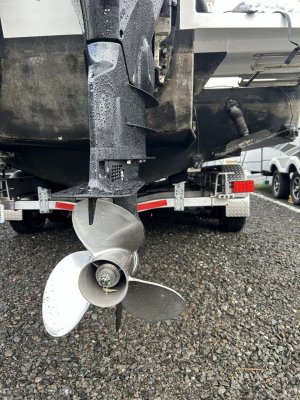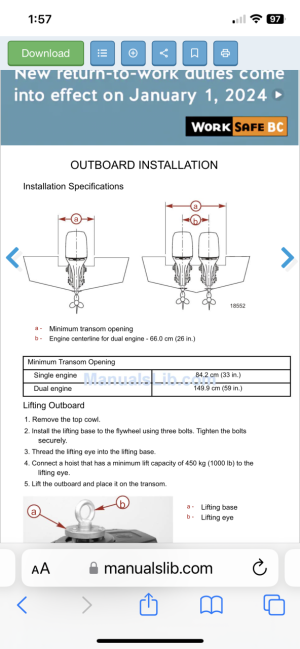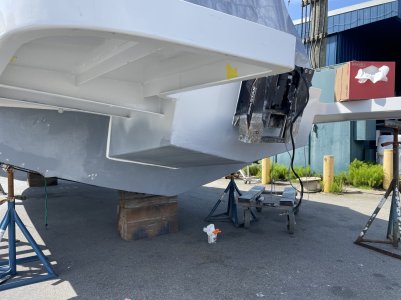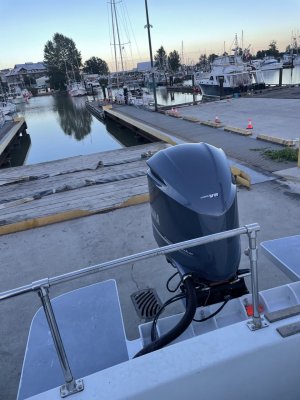Sharphooks
Well-Known Member
So I finally got a chance to take some pictures of my twin DF300 ventilation plates relative to the hull of the boat
I’ve whined in the past about disappointing fuel burn (1.3–1.5 Gph with fuel tanks half full)
What do you guys think of the way they are hung on the transom? The guy who hung them invited me to lift them north a hole but cautioned there might be cavitation on turns
The way they are mounted now—-rock solid prop grip in any water condition, including following seas
Should I just shut up and call it good and eat the crappy fuel burn?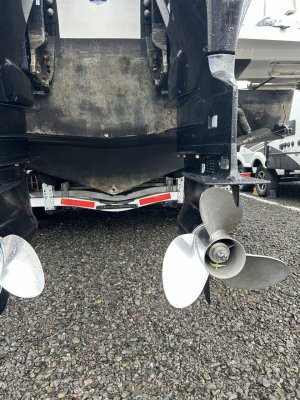
I’ve whined in the past about disappointing fuel burn (1.3–1.5 Gph with fuel tanks half full)
What do you guys think of the way they are hung on the transom? The guy who hung them invited me to lift them north a hole but cautioned there might be cavitation on turns
The way they are mounted now—-rock solid prop grip in any water condition, including following seas
Should I just shut up and call it good and eat the crappy fuel burn?

Attachments
Last edited:


